It’s been a long road
September 6, 2022
Voidfall Design Spotlight #15
This is it, all the designer diaries, spotlights have been done, if you wanted, you could have an exclusive view at our design and development journey pre and post-KS campaign. And before I vanish into the darkness of the endless space, I have one more very different article to share with you.
The target audience of this is not the people who read every diary entry, or who hung out at the discord following every iteration – this article is for the people who checked out the game last year: on videos before and during the campaign, maybe at Essen Spiel 2021, and either backed the game with a question mark in their mind, or just postponed the decision for the pledge manager. I intend to quickly walk you through the whole game on a high level, highlighting things that have changed since last autumn, without going into too much detail, as a sort of “buyers’ checklist”, and to give you an up-to-date understanding of the brutal amount of content we are giving you in the final product… often more than what we promised during the Kickstarter campaign. I won’t highlight how the graphic design of pretty much every component has changed, you can take that as a given, and enjoy the pretty pictures.

The game is the same game we promised: Three cycles, each cycle with a unique event card, followed by 4 to 6 rounds. In each round, each player plays a Focus card, selecting two out of three actions – possibly all three if they flip a Trade token, and possibly an additional action if they play a matching Agenda card. Actions cost mostly resources, occasionally Fleet Power. At the end of the cycle, you must pay upkeep, then you score Influence for the event’s objective and your own Agendas.

🌠Thematic immersion improvement: one of the most requested features during the campaign was to name things. We’ve listened, and worked with Ian to make this a possibility: every Focus action and every Agenda card is now uniquely named, helping both immersion and quick referencing.
🌠Less hurdles, more planning: The way you play Agendas have been completely redesigned: there is no longer a resource cost associated with playing them, merely gaining them and playing one of two matching Focuses are a difficult enough task. However, to reduce “lucky combos”, we’ve restricted players to having at most one Agenda per suit in play at any given time. Agenda cards still consist of a condition and the multiplier, but failing the condition no longer denies you the opportunity to score the multiplier, leading to fewer all-or-nothing situations.
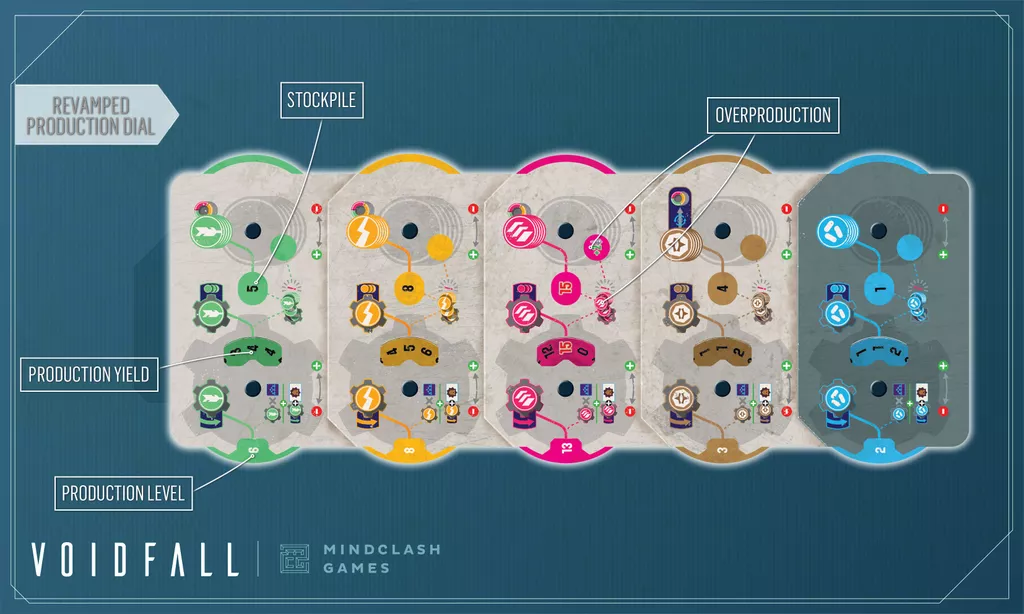
🌠Production dials redesigned: The dials you use to show your resource production and stockpiles have been redesigned not just graphically but usability-wise too, Credits can now freely substitute Food, Energy, and Materials (except during Upkeep) – instead of being limited to one per transaction. Overproduction has been simplified too, you gain Influence each time you overproduce, instead of for each resource you waste.
🌠Abacus no longer required: We removed the upkeep tracker from the player boards, by removing the need for it. Instead of counting multiple things over your player board and the map (resulting in upkeep in the high twenties), upkeep now comes only from Agendas that don’t have Trade tokens, and sectors that are filled with Installations and Guilds: fewer sources to count and smaller numbers to count towards (resulting in upkeep in the low teens), making it faster, easier, and less error prone to do so.
🌠Depth complexity over rules width complexity: We focused the development on gameplay experience, looking to eliminate two kinds of issues: unnecessary smarts, and uninteresting options, both of which we found were mere distractions from the core loops and core euro tightness of the game. The best example of an unnecessary smart we’ve removed is the time cost system: turn order has been simplified to a mere influence-based catch-up choice in competitive, and a mutual decision in cooperative, removing an entire system that players were only interacting with because they were required to do so. The best example for uninteresting options we removed were the multitude of sub-choices involved in taking corruption: afflictions have been removed from the player board (since they tended to be obviously terrible, or obviously easy way out), and placing a corruption on an Agenda no longer discards it (which is a huge penalty, almost never worth it), merely disables its scoring. Pruning unnecessary width like these allowed us to keep the depth of choices of the core game meaty, befitting the heavy euro genre.

Let’s face it: many of you came closer seeing our epic spaceships – and in a game of empire building you want to have the option to get the big guns out occasionally too! So what have we been doing to keep the space fleets of humanity in top-notch condition?
🌠Glass cannons and Swiss army knives: We’ve received many concerned communiques back in the autumn “are you sure the ship types are all balanced”… Well, in case you haven’t had a chance to read all the diaries on the subject, let me reassure you: we’ve kept our intentions of the four plus one unique fleet types (Corvettes go from basic conscripts to terrifying weapons once customized with Technologies, Dreadnoughts live long and defend well, Carriers launch Corvettes while attacking, Sentries function as mobile defense platforms, and Destroyers bomb the defending fleet into oblivion), while we managed to eliminate any “glass cannon” and any “swiss army knife” effect: a fleet type that was super effective in one situation and useless in the other, or a fleet type that solved almost every kind of problem by itself had to change so that the varied tactical situation can be maintained across the whole game, regardless of how many and which of these are in play.
🌠Fewer component types, more bits: Due to gameplay changes, we removed the “two-cube” fleet bases from the game, now every fleet type uses the “three-cube” base. This allowed us to leave more comfortable margins of how many pieces to have in the game, guaranteeing that most players will never run out of components during play. We’ve also balanced the value and usage of the infrastructure (installations and guilds), so that players are not incentivized to build an “endless amount” of them, and optimized the distribution of the various guild and installation types on the tokens based on our playtests, again guaranteeing that the 82 (potentially metal) tokens will be plenty for your games.
🌠More and less aggression: Whether you’re a euro-curious 4x player worried about multiplayer solitaire or a traditional euro engine-builder-enthusiast worried about an opponent shooting up your carefully constructed empire, we’ve been thinking about you. The Voidborn reinforcements mechanism seen up until Essen has been removed from the game (this was acting as a near impenetrable wall between players, stopping any direct conflict), and replaced with the Glory tokens, that reward big conquerors to keep on conquering, turtles to keep on turtling, and when it comes to pvp, it rewards attacking the (other) conqueror instead of the player who’s been quietly minding their own business in the corner of the map. This way, if you want you can certainly go on a glorious crusade burning a path of conquest across the map, even into the territory of other players – but with the number of glory tokens you can keep limited, and with the threat of the end-of-cycle Skirmish (the Voidborn attacking all players, even in competitive) lurking, there are plenty of checks and balances keeping unbound aggression from being unleashed on the rest of the galaxy.

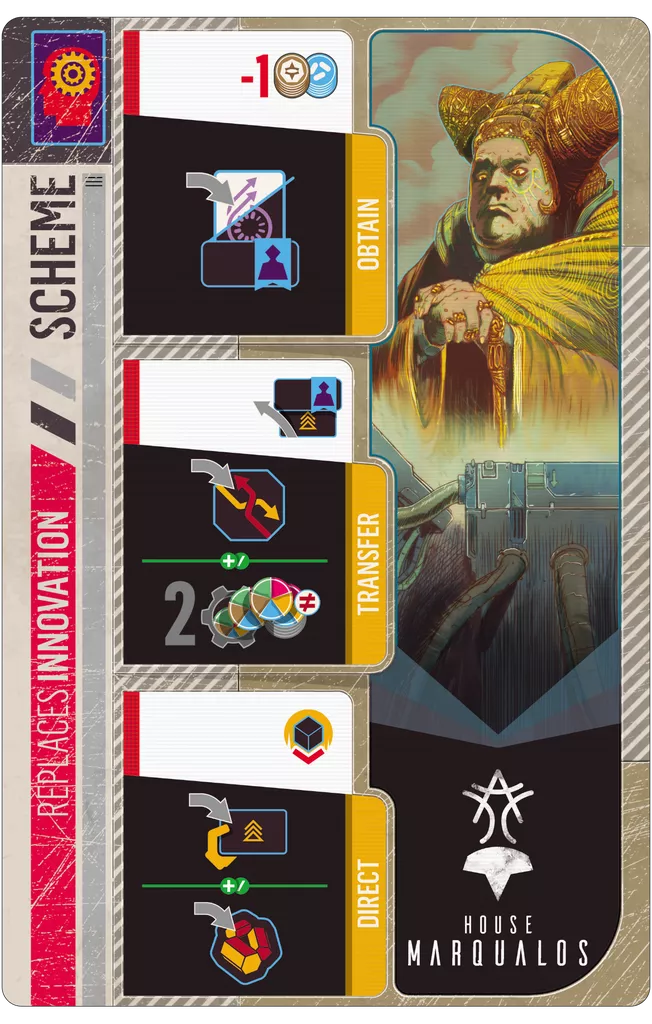
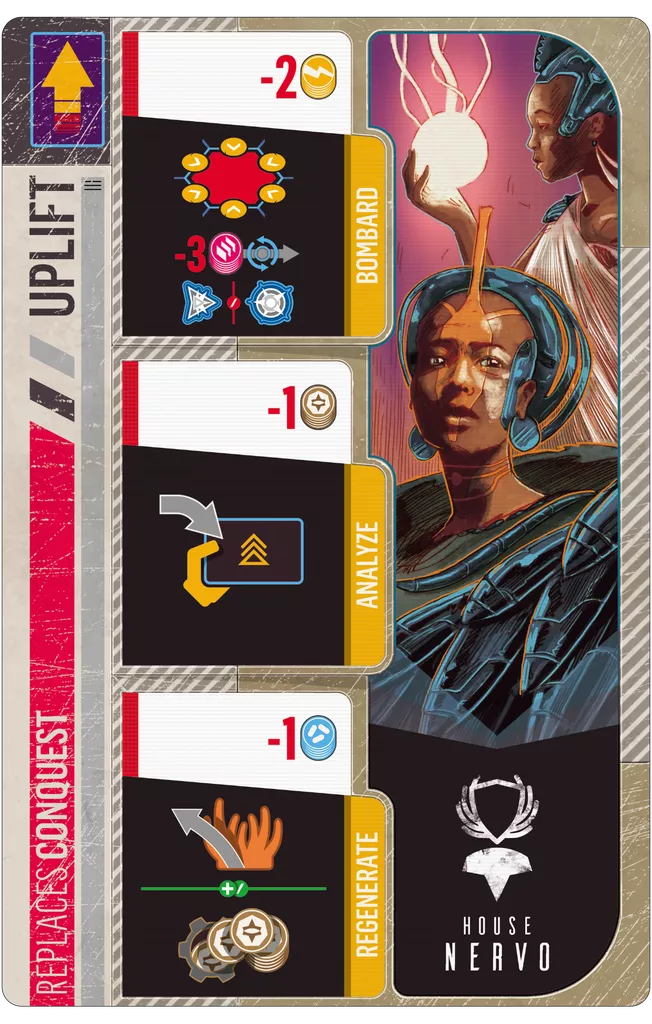
Another major hook we promised was the fourteen asymmetric player Houses, and again, I’m happy to say, after a lot of blood, sweat, and tears, we’re able to deliver on. For details, see my earlier spotlights on the matter (Part I and Part II), while the exact specifics of those are slightly outdated (especially the graphics), you’ll get a good feel of the differences between the Houses there.
Each House comes with two starting setups (Origin cards), paired with a starting Agenda and a starting Technology each. So this alone already gives you 28 strategically different starting points as the first replayability driver of the game. Besides unique abilities and unique Civilization tracks, ten of the Houses have one or two unique Focus cards, and four of the ten even have a unique Home sector!
We’ve rebalanced every Tech completely (some of them several times over) since the autumn to make sure there is no such thing as an “unwanted Technology”, and since the available tableau of 8 Technologies change from game to game, opening up different pathways even if you start from the same origin… You can pick your “first three Technologies” in over 5000 ways, and we made sure they end up feeling quite different in practice.
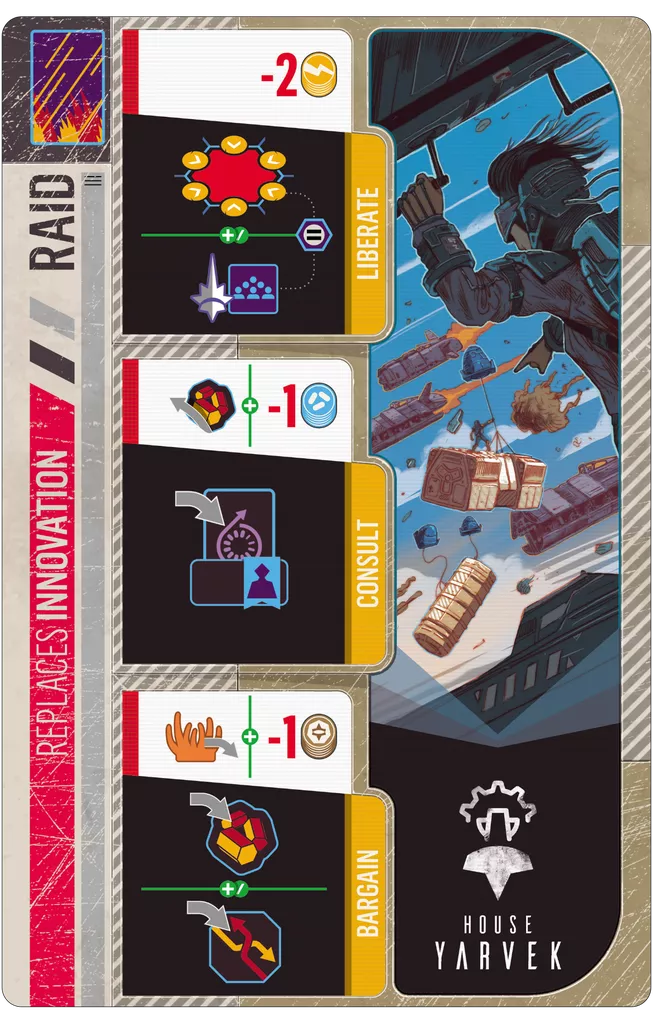
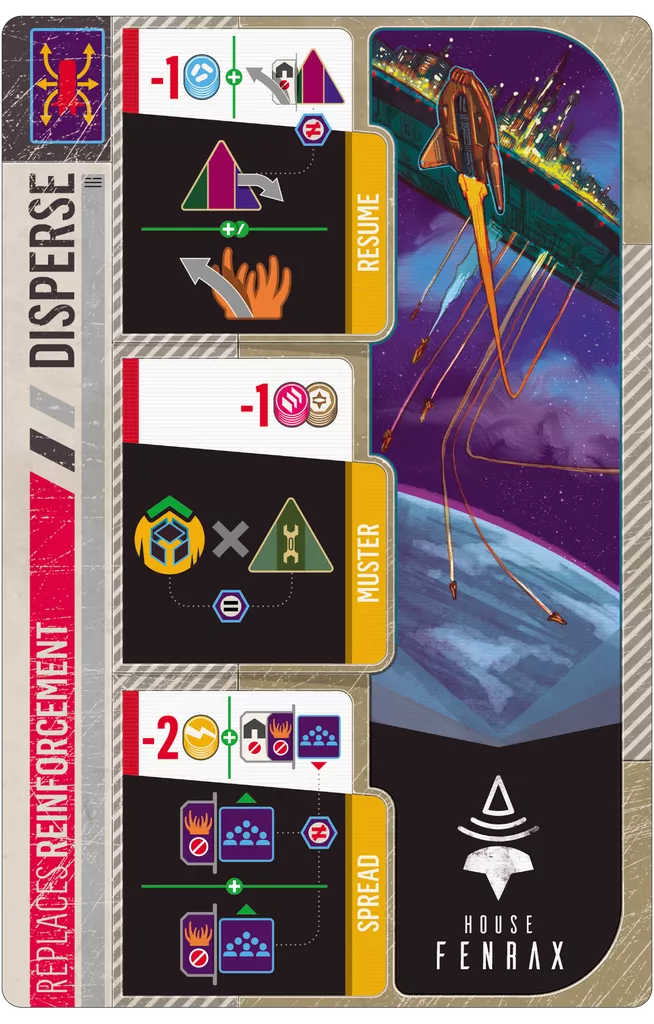
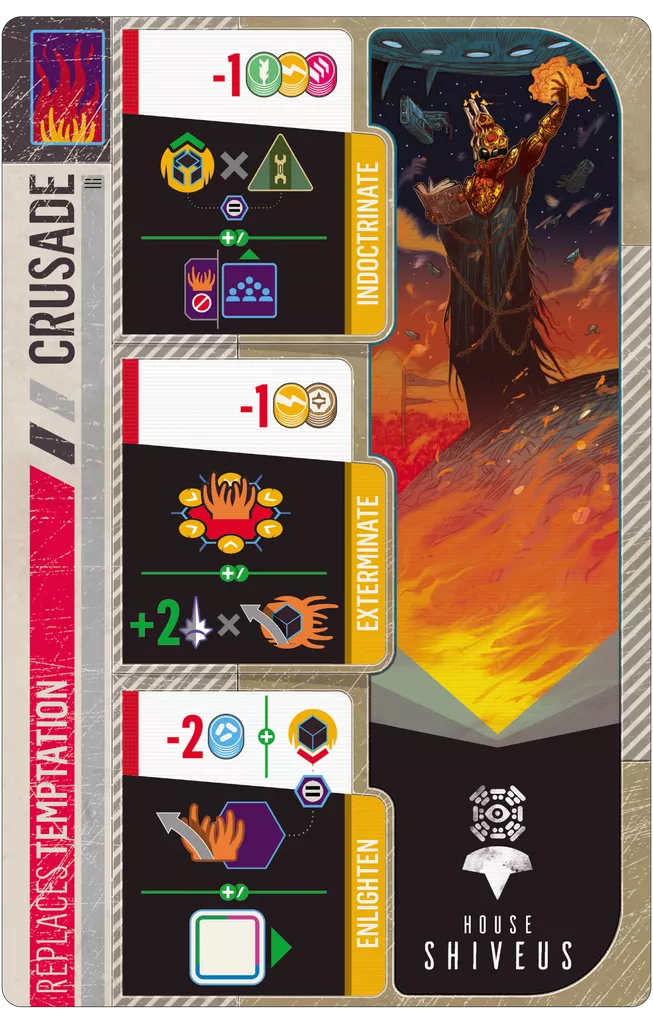

Obviously the biggest difference since the autumn comes in the cooperative/solo part of the game. The Joint Focus cards were first reduced to 10 (from 14), then essentially doubled, as we created a second set called the Heroic Focus cards, with similar effects but specifically designed for solo play. This allowed us to have the Joint Focus cards be more about cooperation for multiplayer, while the Heroic Focus cards are now more about “plugging holes” for solo play.
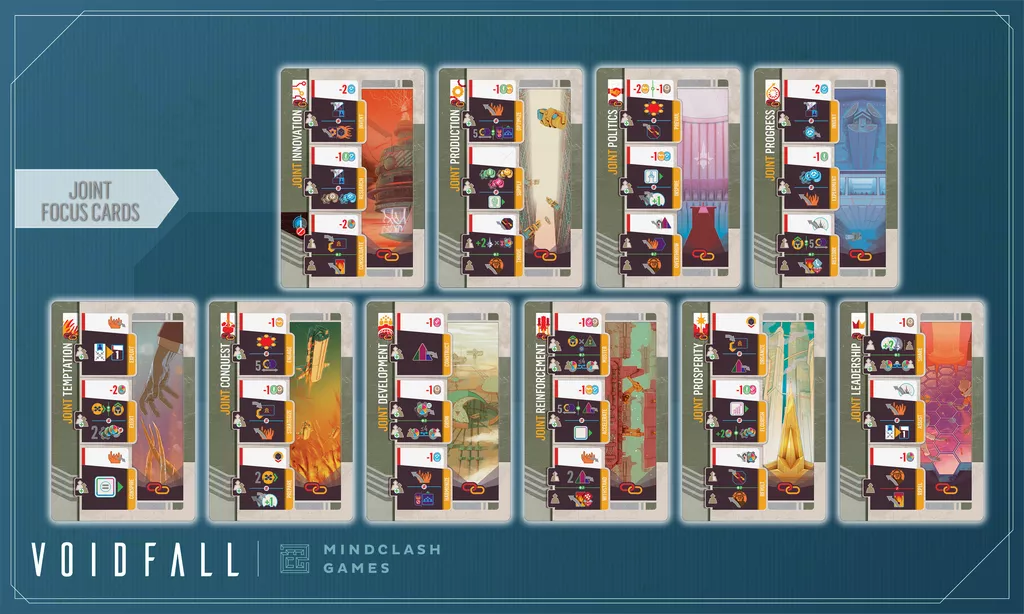
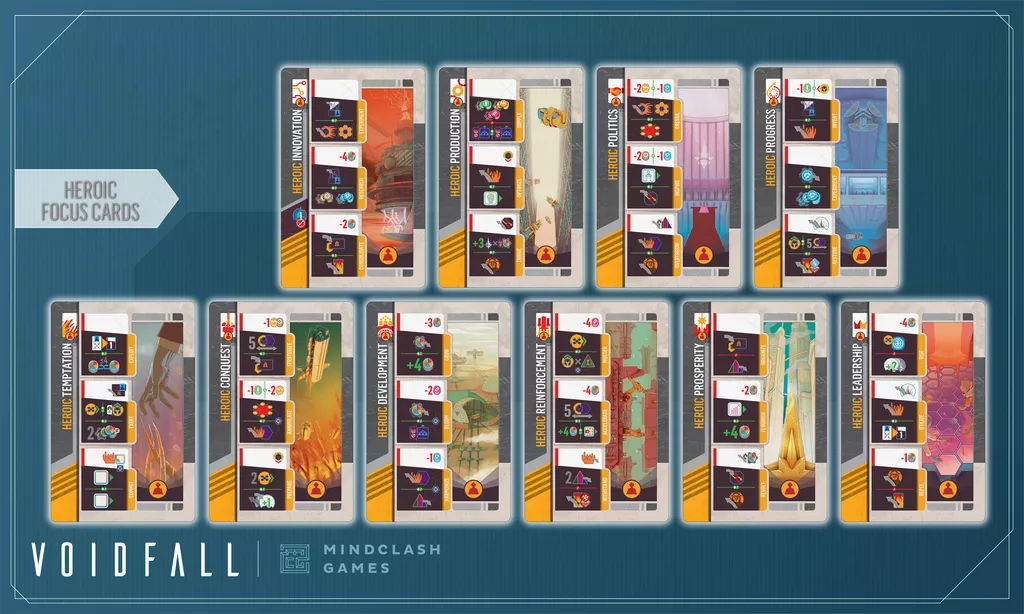
The Crisis cards are still there and mostly work the same way as we explained then, but instead of War cards occasionally popping up (which made it possible that the Voidborn kept randomly attacking the same person every time), we’ve split the functionality into two parts: one card is revealed from the Alert deck (25 cards) at the beginning of each round, determining whether the Voidborn sends a Crisis or a fleet of warships our way (affecting each player with equal difficulty), and then each player draws a Crisis (71 cards) from the respective difficulty on their own turn if an attack is not forthcoming.
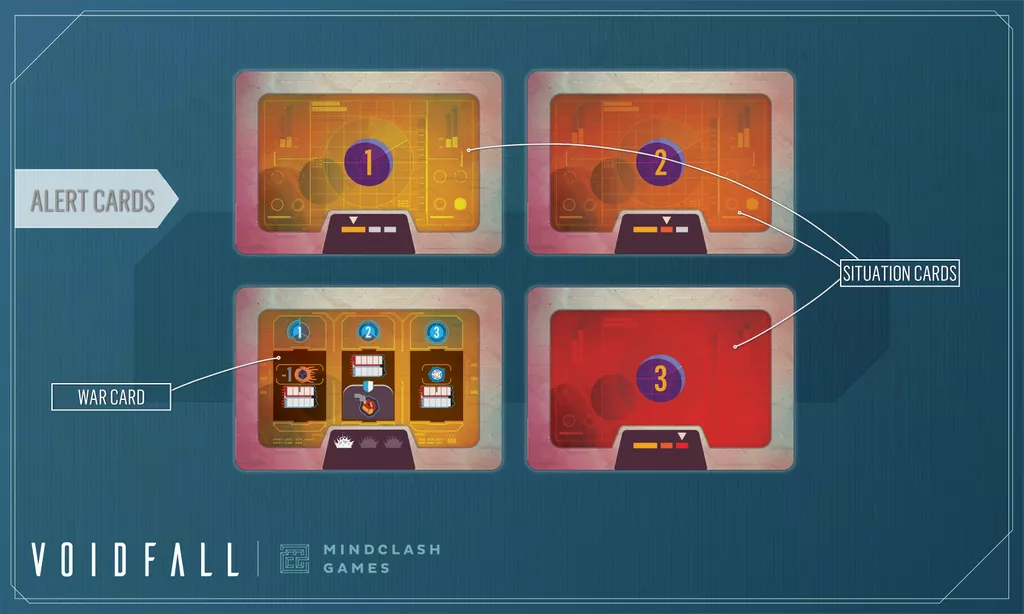
We’ve added a whole new component and mechanism to the cooperative/solo play (again, beyond the things promised during the campaign): players with military strategies loved the epic finale of assaulting the Rift, overcoming the massive fleet the Voidborn staged there. While the economic players could hold their own when it came to scoring influence for themselves, they felt like they had nothing to contribute to the team effort. So we introduced another central “target”, called the Safe Haven tiles. A number of them are in play (depending on the scenario), and players can contribute their inactive fleet power cubes to it (“constructing the safe haven”) each time they meet certain, relatively hard economic goals during play (overproducing twice in a turn, reaching the end of a Civilization track, or finishing a cycle with a population 6 sector that has 3+ guilds). If enough cubes are contributed, the Safe Haven is completed, thus lowering the Voidborn’s final score, making it a similar big scoring achievement to closing a Rift.
Finally, we’ve added three new tiles to mark the Catastrophes on the Void’s board (while originally they were marked by failed crises), to improve the user interface since there were multiple other ways (nothing to do with failing crises) that could cause a Catastrophe to be placed.
Read back to my previous article for more in detail about the safe havens, the alert cards, how exactly the solo/coop works in the final version, and you can read all about how trying to change one line of rules in the clean-up step of the solo/coop rules was the single hardest thing to achieve in over a year of intense development…
And just look at those marvelous artworks of Ian O’Toole on the Safe Havens:

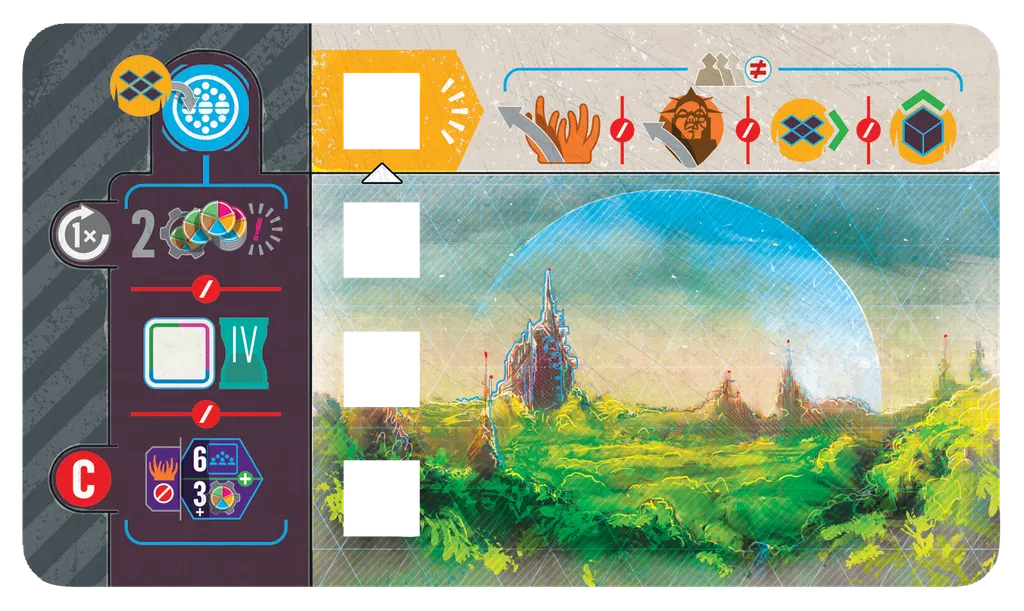

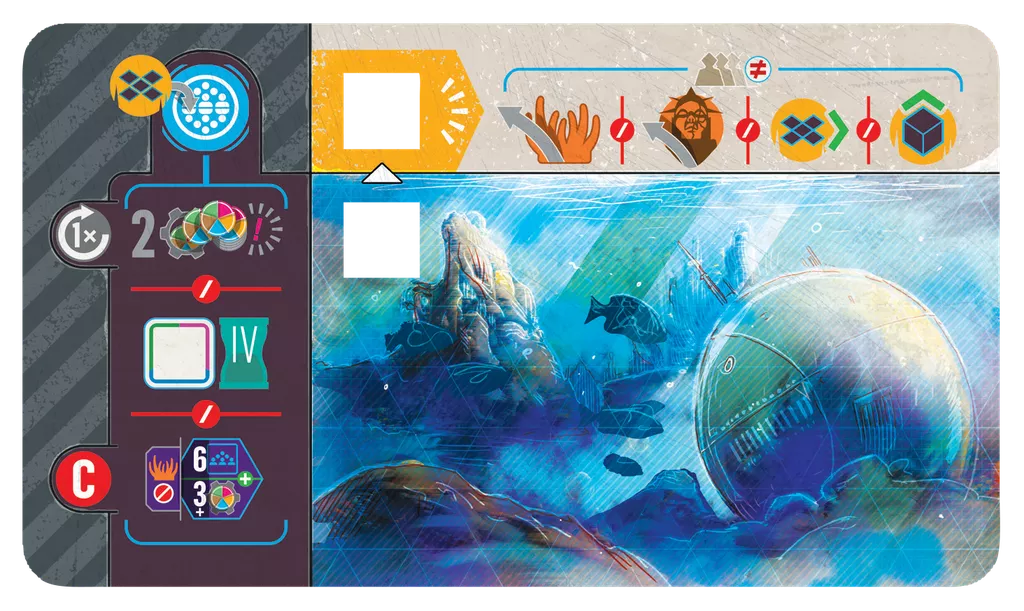


The subject we were the quickest to brush over during the campaign was the topic of scenarios. We were still deep in core game development, and we were unsure what exactly would one “unit of setup” be. So we promised “6 more scenarios in the Compendium”, “more galactic events”, “maps”, etc.
The reality somehow managed to exceed our expectations of possibilities.
The game comes with 26 sector hex tiles and 4 Home sector hex tiles. The 26 tiles all have a standard sector on one side, and a custom one on the other. A standard sector can be made one of six different sectors during setup (differing in starting population, Voidborn forces, bounty/reclaim/glory tokens, or a Fallen House). The other side can have one of 11 special sector types (one of them only used in solo/cooperative), one of which can have three versions based on population and Voidborn forces. So really, you’re getting nineteen types of sectors (besides your home sector and the empty outpost sector next to it, which are set up by your Origin card).
Out of these thirty hexes of almost twenty types we created twenty different map concepts we are calling scenarios. A scenario specifies roughly how big the map should be, how far players are from each other (or from the rifts if playing cooperatively), thus determining the aggression level of the map. It also specifies the special hex types to be used, thus providing both a thematic link and a complexity progression (as certain hex types come with more rules, and/or make reading the map state harder). While we believe every combination of the 28 Technologies in the game are viable and balanced, they don’t all guarantee to offer multiple viable strategies, and we felt that in competitive play it is beneficial to not require every player race for the same exact combo. Thus, for the competitive scenarios, we also pre-selected a Technology tableau, and three corresponding galactic event sets, to provide “even chances” to any reasonable strategy. Meanwhile, on solo/cooperative scenarios the sky’s the limit: a random group of events and a semi-random set of Technologies will provide the player(s) with a unique challenge to solve each time.
Once these concepts have been designed, we set out to assemble the maps that would implement these concepts equally for each player count. The introductory game is for all player counts, the competitive scenarios are usually 2-4 (one of them is 2-3, and one of them is 3-4), while the cooperate scenarios usually 1-3, with a handful of them being 1-4 players. All in all, we’ve included a staggering sixty-two maps (across all player counts) in the Compendium of Voidfall, far above what we promised during the Kickstarter campaign.

All in all, we believe we created a strategic euro game that would be fully replayable and fully exciting if it only had a single scenario and a single, symmetric player House, yet now you’ll have the chance to experience this game over twenty scenarios and fourteen Houses, guaranteeing you fun for hundreds of plays to come.
I hope this informative summary answers many of your questions you might have had lingering, just in time to decide whether to jump in for a late pledge before the PM closes on October 14.